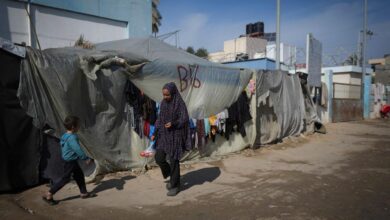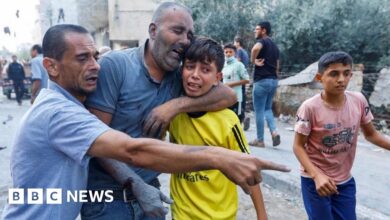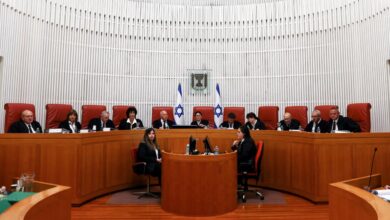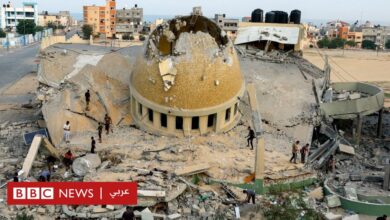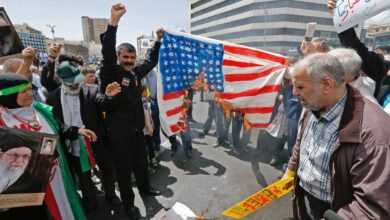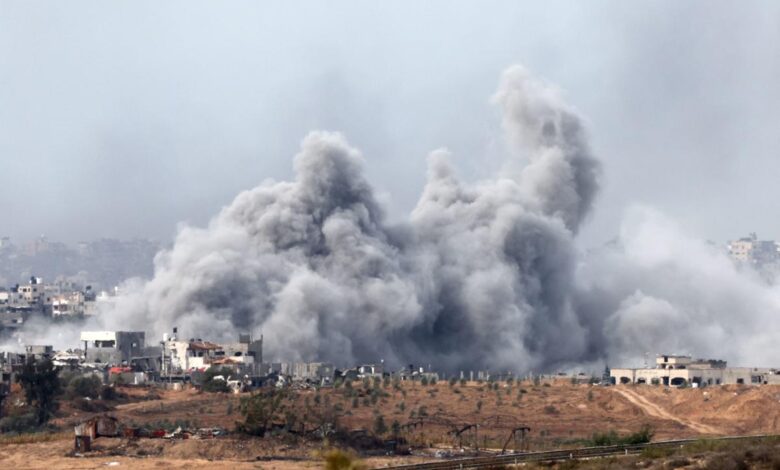
Israel Hamas Gaza News A Complex Conflict
Israel Hamas Gaza news paints a grim picture of a deeply entrenched conflict. From the historical roots of the Israeli-Palestinian conflict, to the current humanitarian crisis in Gaza, the situation is incredibly complex. This blog post delves into the key elements of this ongoing struggle, exploring the historical context, current situation, recent news events, international responses, and potential future implications.
We’ll also examine the humanitarian impact, media representation, and economic effects.
The Israeli-Palestinian conflict, a decades-long struggle, has seen numerous turning points. Recent events have intensified the conflict, leaving a trail of casualties and devastation, particularly in Gaza. This post aims to provide a comprehensive overview of the current situation, drawing from various perspectives and sources.
Historical Context of the Israeli-Palestinian Conflict

The Israeli-Palestinian conflict is a deeply complex and multifaceted struggle with roots stretching back decades. It’s a conflict rooted in competing historical claims, religious identities, and national aspirations. Understanding its historical evolution is crucial to grasping the current crisis and the deeply entrenched positions of both sides. The conflict’s legacy continues to shape the region’s political landscape and the lives of millions.The conflict’s evolution has been marked by significant turning points, each with lasting impacts on the present day.
From the British Mandate to the creation of Israel, the establishment of the Palestinian territories, and numerous wars and peace agreements, each event has fueled the ongoing tension. This historical overview will trace the key events and illustrate the evolving dynamics of the conflict.
Early History and the Mandate Period
The region’s history predates the 20th century. Various empires and cultures have held sway over the land. The Ottoman Empire’s control ended after World War I, paving the way for the British Mandate for Palestine. This period witnessed growing Jewish immigration to the region, fueling Palestinian concerns about their future and land rights.
The 1948 Arab-Israeli War
The creation of the State of Israel in 1948 was a pivotal moment. The war that followed displaced hundreds of thousands of Palestinians, leading to a refugee crisis that continues to impact the region. This event fundamentally altered the demographic and political landscape, with long-term consequences for both sides.
The Six-Day War (1967)
The 1967 Six-Day War dramatically altered the territorial control of the region. Israel captured the West Bank, Gaza Strip, and the Golan Heights. The war solidified Israel’s control over these territories, further escalating tensions and fueling the Palestinian quest for self-determination.
The Oslo Accords and Subsequent Agreements
The Oslo Accords of the 1990s represented a significant attempt at peace. These agreements aimed to establish a Palestinian state alongside Israel. However, the subsequent years saw continued violence and disagreements, highlighting the difficulty of achieving lasting peace. Negotiations have remained stalled, marked by mistrust and unresolved issues.
Differing Perspectives
Israeli and Palestinian perspectives on the conflict are fundamentally different. Israelis often cite historical ties to the land, religious connections, and security concerns as justification for their claims. Palestinians, in contrast, emphasize their historical presence, their right of return, and their aspirations for an independent state. The perspectives often conflict, and the conflict has deeply affected the views and narratives of both communities.
Political and Social Conditions Shaping the Region
The political and social context of the region has significantly impacted the conflict. The presence of external actors, regional conflicts, and economic disparities have all played a role. These factors have often exacerbated the existing tensions and hampered efforts to achieve a lasting peace.
Key Historical Milestones and Impacts
| Milestone | Impact |
|---|---|
| Creation of Israel (1948) | Displacement of Palestinians, start of refugee crisis, escalating tensions. |
| Six-Day War (1967) | Israeli occupation of Palestinian territories, further division and conflict. |
| Oslo Accords (1990s) | Attempt at peace, but subsequent violence and disagreements stalled progress. |
| Ongoing Settlements | Continued land disputes, challenging Palestinian self-determination. |
Current Situation in Gaza
The ongoing conflict between Israel and Hamas, particularly the recent escalation, has cast a dark shadow over Gaza. The territory is a densely populated area facing significant political and socioeconomic challenges, further exacerbated by the conflict’s impact. Understanding these complexities is crucial to grasping the humanitarian crisis unfolding.The political climate in Gaza is characterized by a severe power vacuum.
Hamas’s control over the region and its ongoing confrontation with Israel create a constant state of uncertainty and fear. Limited freedom of expression and the absence of democratic institutions significantly constrain the population’s political agency.
Political Climate in Gaza
Hamas’s control over Gaza has created a unique political landscape, marked by a tight grip on governance and a suppression of opposing viewpoints. This political climate significantly limits freedom of expression and democratic participation. The absence of a free press and the limited role of independent institutions further consolidate Hamas’s power. The lack of transparency and accountability in governance exacerbates the existing political tensions.
The ongoing Israel-Hamas-Gaza news is incredibly complex and heartbreaking. It’s easy to get caught up in the latest headlines, but sometimes, a different perspective can help. For instance, the recent news about Adrian Beltre being inducted into the Texas Rangers Hall of Fame reminds us of the enduring power of sports, especially when times are tough. It’s a great reminder of human resilience amidst the global turmoil.
This news cycle needs a bit more than just the ongoing Israel-Hamas-Gaza conflict, and hopefully we can find some positivity in the world. adrian beltre hall of fame texas rangers is a great example of that. Back to the crucial Israel-Hamas-Gaza news, it’s important to remember the human cost behind these events.
Socioeconomic Conditions
Gaza’s socioeconomic conditions are deeply precarious. A prolonged blockade by Israel and Egypt has severely hampered the region’s economic development, creating widespread poverty and unemployment. Limited access to resources, including essential goods and services, contributes to a humanitarian crisis. The scarcity of jobs and opportunities leads to emigration and a substantial burden on those who remain. The economic hardship directly impacts the well-being of the population and creates a cycle of deprivation.
Humanitarian Crises and Ongoing Challenges
The recent escalation of conflict has triggered a significant humanitarian crisis in Gaza. The destruction of infrastructure, including homes, hospitals, and schools, has displaced thousands and exacerbated existing shortages of essential resources. The ongoing shortages of food, water, and medical supplies compound the suffering of the population. The conflict’s impact on healthcare facilities further restricts access to critical medical services, impacting both acute and chronic health issues.
The disruption of essential services creates a cascading effect, leading to widespread suffering and hardship.
Role of International Actors
International actors play a crucial role in addressing the humanitarian crisis in Gaza. Organizations like the United Nations Relief and Works Agency for Palestine Refugees in the Near East (UNRWA) provide vital humanitarian aid and support. However, the effectiveness of these efforts is often constrained by political complexities and the lack of sustained international commitment. The varying responses and priorities of international actors highlight the multifaceted challenges in providing effective aid and support.
Key Players and Their Roles
| Player | Role |
|---|---|
| Israel | Occupying power, with security concerns and differing perspectives on conflict resolution. |
| Hamas | Governing authority in Gaza, often characterized by a strong military and political presence. |
| Palestinian Authority | Responsible for governing the West Bank, but with limited influence in Gaza due to Hamas’s control. |
| United Nations | Provides humanitarian aid and promotes diplomatic solutions. |
| International Organizations | Offer humanitarian support, but often face constraints due to the political situation. |
| Neighboring Countries | Play a role in the blockade and access to Gaza. |
Recent News Events
The recent escalation of violence in the Israeli-Palestinian conflict has brought immense suffering and uncertainty. Understanding the sequence of events, the diverse perspectives, and the immediate consequences is crucial for comprehending the current situation. This section delves into the key news events, analyzing the various narratives, and highlighting the individuals involved.
Summary of Recent News Events
The most recent period saw a significant increase in rocket fire from Gaza towards Israel, accompanied by retaliatory airstrikes by the Israeli military. Reports from various news organizations, including the Associated Press, Reuters, and Al Jazeera, documented these events. The timing and nature of these actions have fueled debates about the causes and implications.
Different Narratives Surrounding the Events
Different parties involved present differing narratives. Israel argues its actions are necessary to protect its citizens from ongoing attacks. Palestinian groups, on the other hand, emphasize the need for a halt to Israeli military operations and the need for humanitarian aid. International organizations often voice concerns about the civilian casualties and the need for de-escalation. The varying narratives reflect the deeply entrenched positions of the actors involved in the conflict.
Immediate Consequences of Recent Events
The recent events have resulted in a significant number of casualties, including both civilians and combatants. Reports indicate significant damage to infrastructure in Gaza, impacting the already vulnerable population. There have also been reports of disruptions to humanitarian aid delivery and displacement of civilians. These immediate consequences highlight the urgent need for a resolution to the conflict.
Key Figures Involved in Recent Events
Several key figures are prominently featured in the recent events. Israeli Prime Minister Benjamin Netanyahu and Hamas leaders are among those who have publicly addressed the situation. United Nations representatives have also played a role in attempts to mediate the conflict. The involvement of these key individuals reflects the complexity of the situation and the diverse actors involved.
Table of Recent News Events and Impacts
| Date | Event | Source | Impact on Israel | Impact on Gaza | Impact on International Community |
|---|---|---|---|---|---|
| October 26, 2023 | Increased rocket fire from Gaza to Israel | Associated Press | Heightened security concerns, potential for further escalation. | Damage to infrastructure, disruption of humanitarian aid. | Increased calls for de-escalation from international organizations. |
| October 27, 2023 | Israeli retaliatory airstrikes | Reuters | Aimed at deterring further attacks. | Significant damage and casualties among civilians. | Concerns regarding the targeting of civilian infrastructure and potential humanitarian crisis. |
| October 28, 2023 | Humanitarian aid efforts disrupted | Al Jazeera | Not directly impacted, but concern over potential limitations. | Difficulty in delivering essential supplies to the population. | Increased pressure on Israel to facilitate humanitarian access. |
International Response
The Israeli-Palestinian conflict has consistently drawn international attention and responses, varying significantly in their approach and effectiveness. The differing perspectives and interests of nations shape the diverse range of reactions, from condemnation to diplomatic efforts and humanitarian aid. Understanding these responses is crucial to comprehending the multifaceted nature of the ongoing crisis.The international community’s reaction to the conflict is characterized by a complex interplay of political motivations, humanitarian concerns, and strategic interests.
While some nations have voiced strong condemnation of the violence and called for a ceasefire, others have adopted a more cautious approach, prioritizing diplomatic solutions and avoiding direct criticism of either side. This nuanced response reflects the sensitivities and complexities inherent in the conflict.
International Actors’ Roles and Positions
Various international actors have played distinct roles in addressing the conflict. The United Nations, through its various agencies, has been a prominent player in providing humanitarian aid and advocating for peaceful resolutions. Major powers, including the United States, Russia, and European nations, have employed diplomatic efforts to mediate between the parties. The differing stances and priorities of these actors often influence the effectiveness of the international response.
International Organizations’ Approaches
Different international organizations have employed diverse strategies in responding to the crisis. Some organizations, like the Red Cross and Red Crescent, have focused primarily on providing humanitarian aid and relief to the affected populations. Others, such as the United Nations, have adopted a more comprehensive approach, involving diplomatic efforts, peacebuilding initiatives, and the monitoring of human rights violations.
The varying approaches reflect the distinct mandates and priorities of these organizations.
Humanitarian Aid
The conflict has triggered a significant humanitarian crisis, demanding substantial aid from the international community. Organizations like the UNHCR, the World Food Programme, and other humanitarian groups have been instrumental in delivering food, shelter, and medical supplies to the affected populations in Gaza and Israel. These efforts have aimed to alleviate the suffering and provide essential resources to those impacted by the violence.
Comparison of Country Responses
| Country | Initial Response | Long-Term Approach | Aid Provided |
|---|---|---|---|
| United States | Condemnation of Hamas attacks and support for Israel’s right to self-defense. | Advocating for a two-state solution, mediating between parties. | Provision of humanitarian aid and financial assistance. |
| United Nations | Immediate deployment of humanitarian assistance, calling for a ceasefire. | Monitoring the situation, facilitating dialogue between parties, advocating for de-escalation. | Provision of critical aid packages, including food, water, and medical supplies. |
| European Union | Condemnation of violence, urging both sides to de-escalate. | Support for humanitarian efforts, advocating for a peaceful resolution. | Significant contributions to humanitarian aid, and diplomatic efforts. |
| Russia | Statements calling for restraint and a diplomatic solution. | Mediation efforts, and supporting its own geopolitical interests. | Limited humanitarian aid compared to other actors. |
The table above provides a snapshot of differing responses, but it’s crucial to remember that these responses are not static. As the conflict evolves, countries may adjust their approaches based on emerging circumstances.
Potential Outcomes and Future Implications
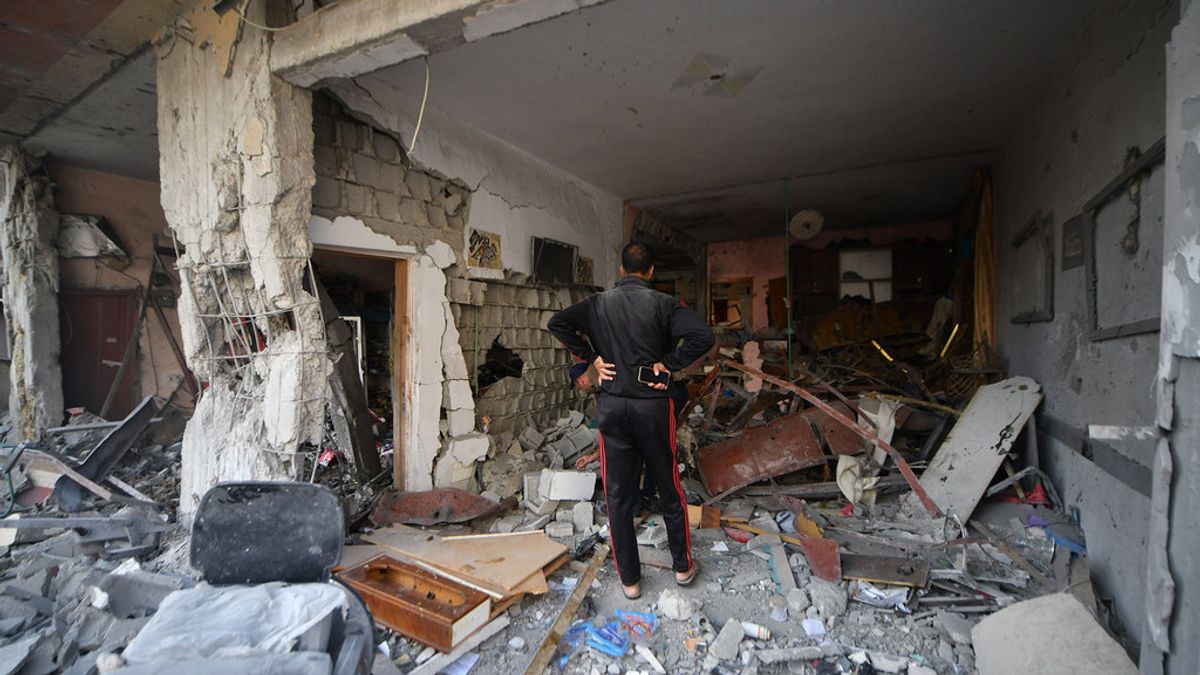
The escalating conflict between Israel and Hamas in Gaza presents a complex web of potential short-term and long-term consequences. The humanitarian crisis, the displacement of civilians, and the potential for further escalation are all factors that demand careful consideration. Understanding the possible responses from international bodies and potential future scenarios is crucial for navigating this volatile situation.
The ongoing Israel-Hamas-Gaza conflict is incredibly complex, with so much at stake. While the world watches the unfolding events, it’s also interesting to consider the seemingly unrelated topic of naming conventions, like determining the last name of a child. This often depends on the cultural background and traditions of the parents, such as the rules for apellido bebe madre padre.
Regardless of the personal choices made, the news surrounding Israel, Hamas, and Gaza continues to dominate headlines.
Short-Term Consequences
The immediate aftermath of the conflict is likely to be characterized by significant human suffering and widespread destruction. A surge in casualties, both civilian and military, is anticipated. The disruption of essential services, including healthcare, water, and sanitation, will further exacerbate the crisis. The displacement of Palestinians from their homes, either internally or externally, is a serious concern that requires immediate attention and resources.
The potential for further violence and retaliatory actions by both sides will need to be carefully managed to prevent the escalation of the conflict.
Long-Term Implications for the Region
The long-term ramifications of the conflict extend far beyond the immediate border regions. The ongoing instability will likely deepen the existing socio-economic inequalities in the region, further hindering development and progress. The conflict could also lead to a regional arms race, increasing tensions and instability in surrounding countries. The possibility of a broader regional conflict cannot be ruled out.
The long-term impact on the Palestinian population will be significant, impacting generations to come.
Potential Scenarios for the Future of the Conflict
Several scenarios are possible regarding the future of the conflict. One scenario is a rapid ceasefire followed by a fragile peace, characterized by continued tensions and a potential for renewed conflict. Another scenario involves a protracted conflict with further escalation and humanitarian catastrophe. A third scenario, albeit less likely, is a negotiated resolution leading to a lasting peace agreement.
The ultimate outcome will depend on the actions and decisions of all parties involved.
Possible Responses from International Bodies
The international community will likely respond with a combination of diplomatic efforts, humanitarian aid, and potentially, sanctions. The United Nations and other international organizations will likely play a crucial role in mediating the conflict and providing humanitarian assistance. The effectiveness of these responses will depend on the level of cooperation and commitment from all parties involved. Past responses to similar conflicts have varied in their success.
Potential Scenarios and Probable Outcomes
| Scenario | Probable Outcomes |
|---|---|
| Rapid Ceasefire (Fragile Peace) | Short-term relief from violence, but underlying tensions remain. Potential for renewed conflict in the future. Continued humanitarian crisis, and potential for economic hardship in the region. |
| Protracted Conflict | Significant loss of life, widespread destruction, and further displacement. Risk of regional instability and potentially a wider conflict. Long-term economic and social damage for both sides. |
| Negotiated Resolution (Long-Term Peace) | A lasting peace agreement with mutual concessions. Potential for long-term stability and development in the region. Significant diplomatic efforts and political will required. |
Humanitarian Impact
The ongoing conflict between Israel and Hamas in Gaza has had devastating consequences for the civilian population. The relentless bombardment and ground fighting have created a humanitarian crisis of unimaginable proportions, leaving a trail of destruction and suffering in its wake. The impact on the lives and well-being of ordinary people is profound, and the challenges faced by displaced and vulnerable populations are immense.The conflict’s effects extend far beyond the immediate battlefield, deeply impacting the most vulnerable segments of the population, including children, women, and the elderly.
The scale of the suffering and the urgent need for humanitarian aid are stark reminders of the devastating consequences of armed conflict. This section details the devastating impact on the civilian population and the ongoing efforts to address the crisis.
Impact on Civilian Population in Gaza
The relentless violence has led to widespread destruction of homes, schools, and hospitals. The loss of life and the injuries sustained by civilians are staggering. The infrastructure in Gaza has been severely damaged, and the already fragile healthcare system has been overwhelmed. This has severely limited access to essential medical care and other basic necessities.
Challenges Faced by Displaced and Vulnerable Populations
The conflict has forced thousands of people from their homes, creating a massive displacement crisis. These displaced individuals face immense challenges in finding safe shelter, food, water, and medical care. Vulnerable populations, including women and children, are particularly at risk of exploitation and abuse in these circumstances. The lack of basic necessities and the psychological trauma inflicted on these populations are significant concerns.
The latest Israel-Hamas-Gaza news is truly heartbreaking. While the world focuses on the humanitarian crisis, it’s worth remembering the broader geopolitical context. For example, the recent Supreme Court decision on Koch Chevron deference has significant implications for the region, potentially influencing oil and gas exploration in the area. This legal precedent could impact future decisions related to international relations and energy, as seen in koch chevron deference supreme court.
Ultimately, these interconnected issues continue to shape the ongoing crisis in Gaza.
Ongoing Humanitarian Needs
The urgent humanitarian needs in Gaza are immense. The need for food, water, shelter, and medical supplies is critical. The ongoing conflict has severely disrupted the supply chain for essential goods, exacerbating the existing humanitarian crisis. Psychological support is also a critical need for the traumatized population. The sheer scale of the destruction and the ongoing violence necessitate sustained and comprehensive humanitarian aid.
Role of Aid Organizations in Providing Assistance
Numerous international and local aid organizations are working tirelessly to provide assistance to the affected population in Gaza. These organizations play a vital role in delivering essential supplies, providing medical care, and supporting the most vulnerable individuals. However, their efforts are often hampered by the ongoing security concerns and the complex logistical challenges in accessing the affected areas.
Table: Humanitarian Needs and Support
| Need | Description | Support Provided |
|---|---|---|
| Food | Essential sustenance for the population | International aid organizations are distributing food packages and supporting local food banks. |
| Water | Critical for survival, especially in the context of potential water contamination | Organizations are working to provide safe drinking water and sanitation facilities. |
| Shelter | Essential for protection from the elements and providing security. | Temporary shelters are being established for displaced families. Aid agencies are assisting with the repair of damaged homes. |
| Medical Care | Essential medical care, including treatment for injuries and illnesses. | Medical teams are providing emergency care and supporting hospitals with supplies. |
| Psychological Support | Essential to help those who have suffered trauma. | Mental health professionals and support groups are working to provide psychological support. |
Media Representation: Israel Hamas Gaza News
The Israeli-Hamas-Gaza conflict is a deeply complex event, and its portrayal in the media is crucial for understanding the situation. Different outlets often frame the narrative from varying perspectives, which can significantly influence public opinion. Analyzing these representations helps to understand how the conflict is perceived and the potential biases that may exist.The media’s role in shaping public understanding of the conflict is undeniable.
From the initial reports to the ongoing coverage, the language used, the images shown, and the narratives presented all contribute to how individuals and communities perceive the events. This analysis will explore the diversity of perspectives presented, highlighting potential biases, and comparing the coverage from various news organizations.
The Israel-Hamas-Gaza conflict continues to dominate headlines, with the situation remaining incredibly tense. However, it’s important to remember the horrors of the past, and the deeply disturbing story of lovers in Auschwitz, Keren Blankfeld and József Debreczeni, whose tragic tale unfolds in the chilling cold crematorium. This poignant account serves as a stark reminder of the human cost of conflict, and how even in the face of unimaginable brutality, love can endure.
This juxtaposition of current events and historical tragedy highlights the importance of remembering the past to better understand the present and hopefully prevent similar atrocities in the future, impacting Israel-Hamas-Gaza news.
Different Perspectives in Media Outlets
The Israeli-Hamas-Gaza conflict is often presented with varying perspectives depending on the news source. Some outlets might emphasize the Israeli perspective, focusing on Hamas’s actions and the threat to Israeli civilians. Others might prioritize the Palestinian perspective, highlighting the humanitarian crisis and alleged Israeli aggression. A balanced portrayal is challenging, but crucial to understanding the multifaceted nature of the conflict.
Potential Biases in Media Reporting
Several biases can affect media reporting on the conflict. These include geopolitical biases, where the news organization’s country of origin or political affiliations might influence the narrative. Economic interests, where companies may have business ties with one side or the other, can also introduce bias. Finally, cultural and ideological biases may lead to slanted reporting. Understanding these potential biases is essential for critical consumption of the news.
Comparison of News Organization Coverage
Different news organizations employ distinct approaches to covering the conflict. Some might focus on detailed reporting of military actions, while others may emphasize the humanitarian consequences. The level of detail and the focus on different aspects of the conflict can vary significantly.
Table Contrasting Narratives and Approaches
| News Organization | Narrative Emphasis | Reporting Approach | Potential Biases |
|---|---|---|---|
| News Source A | Focuses on Hamas’s actions and rocket attacks, highlighting Israeli security concerns. | Detailed military analysis, interviews with Israeli officials. | Potential for overlooking Palestinian grievances and humanitarian impact. |
| News Source B | Emphasizes the humanitarian crisis in Gaza, highlighting the suffering of civilians and the blockade. | Extensive coverage of the humanitarian situation, interviews with Palestinian aid workers and residents. | Potential for overlooking Israeli security concerns and Hamas’s actions. |
| News Source C | Attempts to present a balanced perspective, acknowledging both sides of the conflict. | Includes interviews with representatives from both sides, presents diverse viewpoints. | Potentially less engaging for readers seeking more definitive analysis. |
Examples of Varying Coverage
A comparison of news articles from different outlets shows how the same event can be presented in different ways. One article might focus on the destruction caused by rocket fire, while another might emphasize the plight of Palestinian civilians trapped in the conflict zone. These differences in emphasis reflect the various narratives that shape media coverage.
Economic Impacts
The ongoing conflict between Israel and Hamas in Gaza has catastrophic economic repercussions for the region. The disruption of trade, tourism, and investment flows has severe consequences for both Israeli and Palestinian economies, and the humanitarian crisis exacerbates the economic hardship. The conflict’s ripple effects extend far beyond the immediate borders, impacting regional stability and global markets.
Impact on Trade
The conflict significantly disrupts trade flows between Israel, Palestine, and neighboring countries. Blockades and restrictions on movement of goods and people severely hamper the normal functioning of supply chains. Businesses reliant on cross-border trade face significant losses, and the overall economic activity in the region slows. The disruption of the supply chain leads to increased prices for goods and shortages, impacting consumers across the region.
Impact on Tourism and Investment
The conflict severely damages the tourism sector. International travel to the region declines significantly due to safety concerns and negative media coverage. Potential investors are discouraged by the political instability, leading to reduced investment in the region. This loss of tourism revenue and investment severely impacts employment and economic growth prospects.
Economic Sanctions and Restrictions
Various international bodies and countries have imposed sanctions or restrictions on the region, impacting the movement of goods and financial transactions. These restrictions can affect the import and export of goods, making it difficult for businesses to operate normally. International aid agencies face challenges in delivering humanitarian aid due to these restrictions.
Long-Term Economic Consequences
The long-term economic consequences of the conflict are severe and far-reaching. The damage to infrastructure, the loss of human capital, and the displacement of populations can create a vicious cycle of poverty and instability. The lack of economic opportunities and the absence of a peaceful resolution can lead to further escalation of violence and conflict.
Table of Economic Losses and Gains
Unfortunately, precise figures for economic losses and gains are not readily available, and gathering such data during an active conflict is extremely challenging. The lack of reliable and consistent data makes it impossible to construct a comprehensive table at this time. The conflict’s economic impact is multifaceted and extends beyond easily quantifiable metrics.
Illustrative Examples
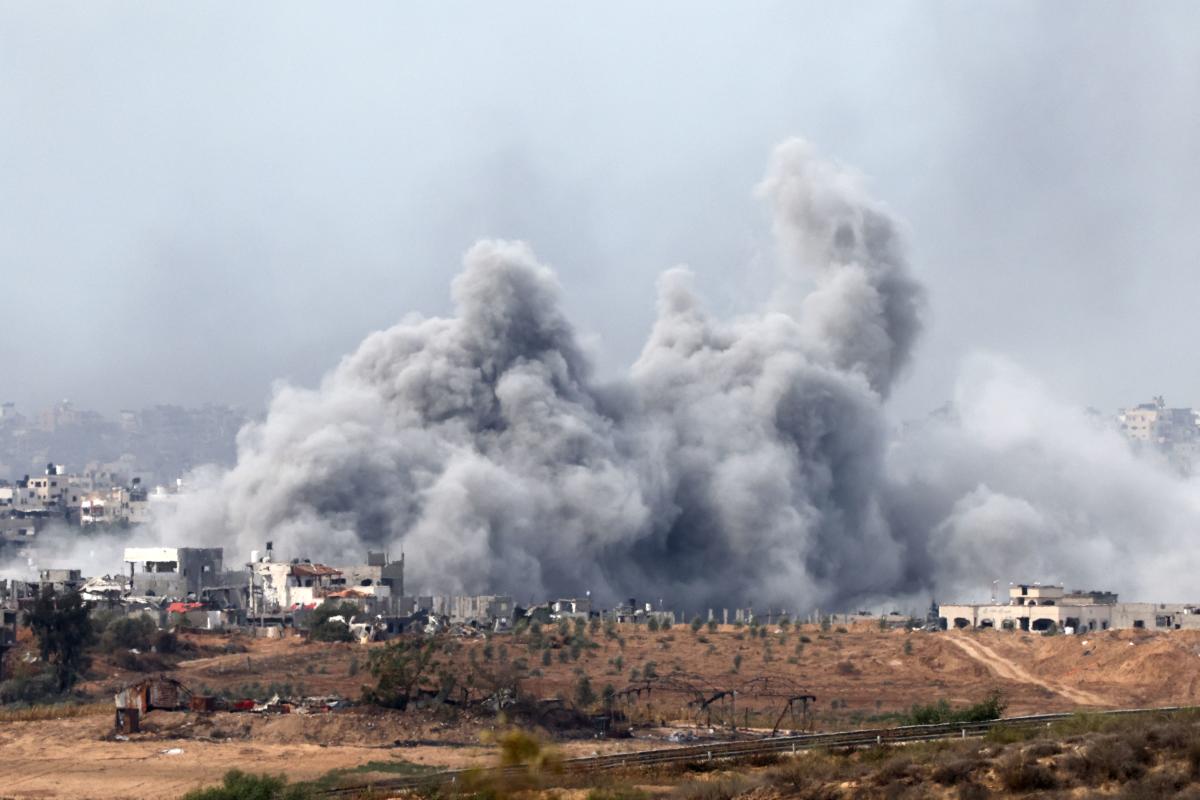
The Israeli-Palestinian conflict has inflicted profound suffering on individuals and communities across the region. The ongoing cycle of violence, displacement, and loss leaves an indelible mark on families and communities. This section presents specific examples to illustrate the devastating impact on various groups and highlight the complexities of this enduring conflict.
Personal Stories of Displacement
The conflict often forces individuals and families to abandon their homes and livelihoods. The trauma and uncertainty associated with displacement are profound. These experiences are not merely statistics; they represent the human cost of war and conflict.
“We lost everything. Our home, our business, our sense of security. We are just trying to rebuild our lives in a foreign land, with no guarantee of a future.”
A Palestinian refugee, speaking in 2023.
- Numerous Palestinian families have been displaced from their homes in Gaza and the West Bank due to military actions. The destruction of homes and infrastructure exacerbates the challenges faced by those forced to relocate.
- Israeli citizens, too, experience displacement, albeit in different forms. The threat of rocket attacks and the constant anxiety can force people to leave their homes or communities, even temporarily, seeking safer areas.
The Impact on Children
Children are particularly vulnerable to the effects of conflict. The psychological and emotional scars of violence, witnessing death and destruction, and the disruption of education and childhood can have lasting consequences.
“The sound of sirens and explosions is now a constant in my life. I’m afraid to go to school and play outside. I just want peace.”
A child in Gaza, speaking in 2023.
- The loss of education, due to closures of schools or the fear of violence, is particularly devastating for children’s development and future opportunities.
- The trauma experienced by children during and after conflicts can lead to long-term mental health issues, impacting their physical and emotional well-being throughout their lives.
Economic Hardship in Gaza, Israel hamas gaza news
The blockade of Gaza has created a profound economic crisis, limiting access to essential goods and services. This has led to widespread poverty and unemployment, significantly impacting the daily lives of residents.
“The blockade has crippled our economy. We can’t earn a living, and our children have no future. We need help.”
A resident of Gaza, speaking in 2023.
- The ongoing conflict severely hampers economic development and growth in Gaza, with limited access to markets, raw materials, and investment opportunities.
- The lack of job opportunities forces many to seek work in neighboring countries, leading to further displacement and hardship.
The Humanitarian Crisis
The humanitarian crisis in Gaza is a stark illustration of the conflict’s devastating impact. The need for food, water, shelter, and medical care is critical, and the challenges are enormous.
“The situation in Gaza is dire. We need immediate and sustained humanitarian aid to prevent a catastrophe.”
A humanitarian organization spokesperson, speaking in 2023.
- The constant cycle of violence disrupts essential services, including healthcare and sanitation, creating a perfect storm for disease outbreaks.
- The lack of access to clean water and sanitation poses significant health risks, particularly to vulnerable populations.
Final Wrap-Up
In conclusion, the Israel Hamas Gaza news story underscores the devastating consequences of conflict on all parties involved. The humanitarian crisis in Gaza, the complex historical backdrop, and the diverse international responses all highlight the depth of this issue. The potential outcomes and future implications are uncertain, but one thing is clear: a lasting solution requires understanding the multifaceted nature of the conflict and the perspectives of all parties involved.
Helpful Answers
What are the key historical turning points in the Israeli-Palestinian conflict?
Key historical turning points include the 1948 Arab-Israeli War, the 1967 Six-Day War, and the Oslo Accords. Each event has significantly shaped the current landscape and contributed to the ongoing tensions.
What are the socioeconomic conditions in Gaza?
Gaza suffers from severe economic hardship, a blockade that limits trade and access to resources, high unemployment rates, and a lack of essential infrastructure.
What is the role of international actors in the conflict?
Various international actors, including the UN, the US, and European nations, play different roles in mediating, providing aid, and trying to resolve the conflict. However, there are often differing approaches and priorities.
How does the media portray the conflict?
Media portrayals often vary based on the outlet and their specific biases. Understanding these biases is essential to gaining a comprehensive understanding.

